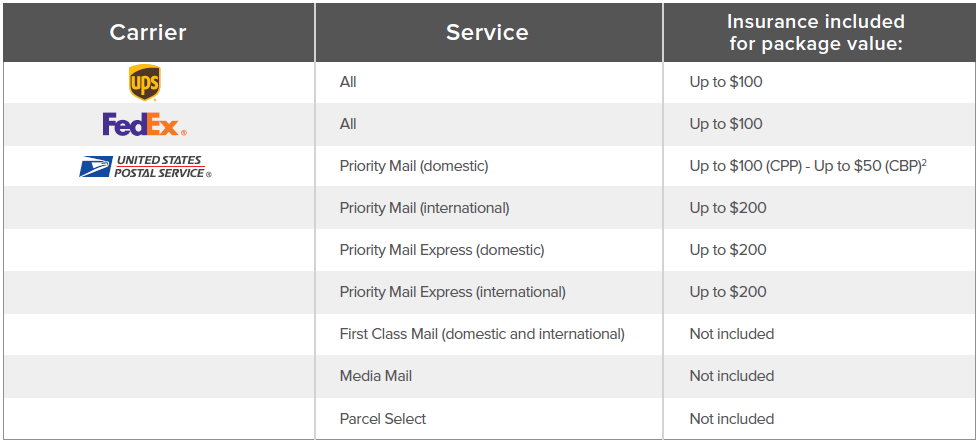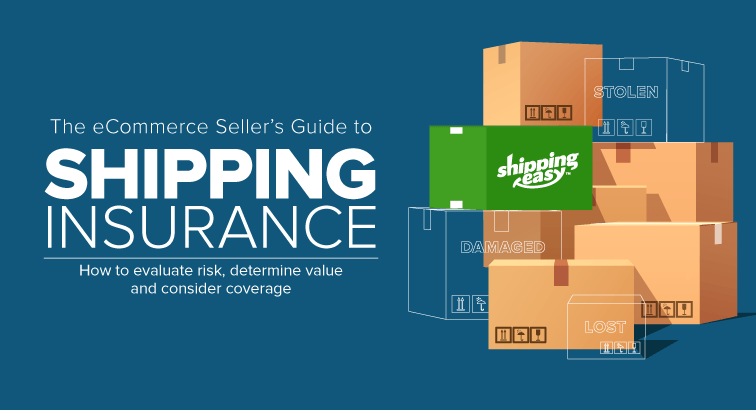As summer winds down, many eCommerce sellers are gearing up for holiday planning. It may be warm outside now, but thinking ahead to snow and slush and ice gives us the shipping shivers. Anything can and does happen during holiday shipping, and with customer expectations constantly on the rise, shipping insurance is something that should be on your radar.
So should you be thinking about shipping insurance for your shipments? Let’s take a page from ShippingEasy’s eCommerce Seller’s Guide to Shipping Insurance to find out what questions you should be asking yourself.
Make Shipping Easy with a 30-day free trial !
Should I Insure It?
To decide this, you need to assess the likelihood that the item may be lost, damaged, or stolen. For high-value items, this may be a pretty straightforward decision, but there are definitely other considerations to take into account.
- Declared value: Most carriers and insurers focus on an eCommerce shipper’s declared value—what you say it’s worth. If that package ends up in a truck that slides into a ditch or under a post-blizzard snowbank and you have to file a claim, it’s up to you to prove the item’s value. The insurer will pay you that value or the declared amount, whichever is smaller. This means if you sell high-value, high-margin items, you can provide some level of protection by declaring the item’s replacement cost to you, the seller, rather than the marked-up retail replacement cost.In the event of loss or damage, you will need to process the claim for your customer and ship them a replacement item. We recommend this only when you are willing to process the claim yourself and when you are including insurance in the price of the item or in a lump sum shipping and handling fee, but in these cases it can reduce your insurance costs significantly over fully covering the retail value.
- Items covered by included insurance: All major carriers provide free coverage up to a certain amount (see below). Keep in mind that these limits apply to the entire package, so if you are shipping multiple items in one package that add up to a higher value than the stated limit, you’ll need to purchase supplemental insurance if you want them to be fully covered.This is how FedEx defines declared value: http://bit.ly/FedExValue
The UPS definition can be found here: http://bit.ly/UPSValue.
For higher value items, be aware that each carrier, as well as shipping insurance providers, have limits on insurance maximums. This varies by carrier and includes both a maximum by item type and an absolute maximum. For a consolidated list, grab a copy of the guide here.
Another important note is that the declared value covered by carriers doesn’t typically cover materials and shipping. Some third-party providers (like Shipsurance, ShippingEasy’s insurance partner) will cover packaging and shipping if these costs are included in the declared value and invoiced to the customer.
Consider Risk
There are many considerations here as well when it comes to making the decision to purchase shipping insurance. Keeping these in mind can help you decide whether to purchase insurance, and also help you find ways to mitigate the risk as much as possible.
- Item type: There are certain types of items that are more likely to be stolen. Those that can be easily resold or pawned, higher end brand names, and compact and easy-to-grab boxes, for example. They look for brand names, too. So a best practice would be to avoid using the brand box, or boxes that may indicate what is inside.
- Destination matters: As unfortunate as it is, some areas are just worse for theft and damage than others. This varies widely in the United States but insuring packages can be a general best practice for international orders, where risk increases. Adding tracking and signature requirements can minimize risk, but even in these scenarios, carriers will impose coverage limits. Also note, many third-party insurers will require some basic level of trackability to insure your package.
The Shipping Insurance Equation
When considering the business case for insuring packages, a cost and risk analysis can help cement your decision. The below equation, backed by your own data and history, may prove useful.
Translation: If the average cost to insure an item is less than what you spend replacing lost, stolen or damaged items … then you should include insurance to mitigate the risk.
For example, let’s say you sell high-end headphones with an average order value of $200, and ship 100 pair per month, of which one (1) pair never makes it to the customer’s door. 1/100 X 200 = 2, so if it costs less than $2 on average to insure an order, it makes business sense for you to buy the insurance. And, in fact, looking at ShippingEasy’s Shipsurance rates for this declared value, the cost of supplemental coverage is less than $2 for all domestic shipping scenarios.
Want to learn more about shipping insurance carriers, policies and procedures, how to file claims, and a more in-depth discussion of the points in this article? Download our free guide below and be prepared before the holiday season is upon us!
Make Shipping Easy with a 30-day free trial !
Rob Zaleski
Latest posts by Rob Zaleski (see all)
- USPS 2023 Shipping Rate Changes - November 16, 2023



